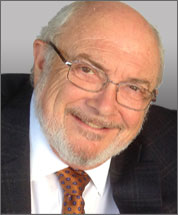Putting People Ahead of Profits.
Putting People Ahead of Profits.
Our founder Ron Slee has spent the last several weeks looking at how people make money. These thoughts have led to tonight’s blog post: putting people ahead of profits.
For some time now, those regular readers of our blogs and listeners to our Podcasts have noticed my focus on customer service and customer retention. Many will have seen the thread through our blogs from various Contributors who have focused on the intuitive truth that customer service enhances customer relationships which results in high customer retention and the data analytics that support that position. The question remains why companies don’t address these issues more.
Recently I was told that I needed to refresh the standards for sales per employee in the product support space. This blog will be the start of that refreshing process.
It is hard for me to imagine that it has been almost thirty years since I wrote several documents addressing job descriptions, standards of performance, best practices, and market opportunities.
What is harder to imagine is that the standards in those documents have not been updated, in any serious manner, to reflect the changes in technology, in the equipment in use in the filled, and in the materials used. More importantly the use of data analytics and machine learning is available through artificial intelligence. My intent is to update each of these documents in 2025.
Significantly for metrics and operating standards I created a business called the Insight (M&R) Institute with a gentleman named Malcolm Phares. Mac during his career had been the VP of Dealer Development for PACCAR and was one of the creators of “Twenty Groups” for the On-Highway Tracking Industry.
The two of us created Insight to perform the same function but for the heavy equipment world. We had Insight groups for many of the major OEM’s. We developed a very comprehensive series of standards and defined each of them and provide data sources for information in business systems. It finally ended up that we had two hundred standard metrics for parts, service, sales, rental, and administration. There was truly little that we missed.
We met our Insight Groups, consisting of twelve dealers in each group, three times a year and did best practices with each of the groups. Mac was an incredibly capable man, and I would not have been able to do this work without him. We also developed a “neutralization document.” This allowed us to present material in a manner that allowed the dealers to be able to compare with their peers even though they had differing financial statement and balance sheet policy differences.
In the 2000’s Dale Hanna and I updated the Insight business after I had purchased Mac’s share in Insight. We created The Capital Goods Sages. www.thecaptialgoodsages.com This is an internet-based business which allows subscribing dealers to submit their data to our financial model and receive their results compared to our standards. In this way I am still able to create aggregated results to maintain operating standards for each of the two hundred metrics.
As my consulting activity moved overseas so did my ability to aggregate standards for different regions in the world. We report back to the subscribing dealers their results with graphics. A frowny face, a smiley face, a green light and orange light, a red light, and a red cross.
What many businesses missed in the application of standards of performance is that there is a point at which you are getting a number that is too high or too low depending on the measure. Most dealers just keep pushing the performance higher and higher. This is a bit of a trap. The dealers think their performance is off the chart in a metric without realizing that there is an offsetting metric that is involved. For instance, drive up sales per employee and the result is lower customer service.
This is what caused the title of this blog. Too many dealers are driving up sales per employee and seeing dramatic increases in Net Profit. What they don’t see is that customer retention is going down. We have a dispute with that statement between dealer executives and I often. They tell me that can’t be true when their overall sales revenues have increased year over year.
I agree with that fact completely. However, at the same time as their sales revenues have increased the number of businesses competing in the market has decreased. In a recent blog I noted that in the years 2000 through 2025 that the number of dealerships competing in the construction equipment market has decreased by 75%. From 2000 dealers in 2000 down to five hundred, or less dealers, in 2025.
The Time is Now.

